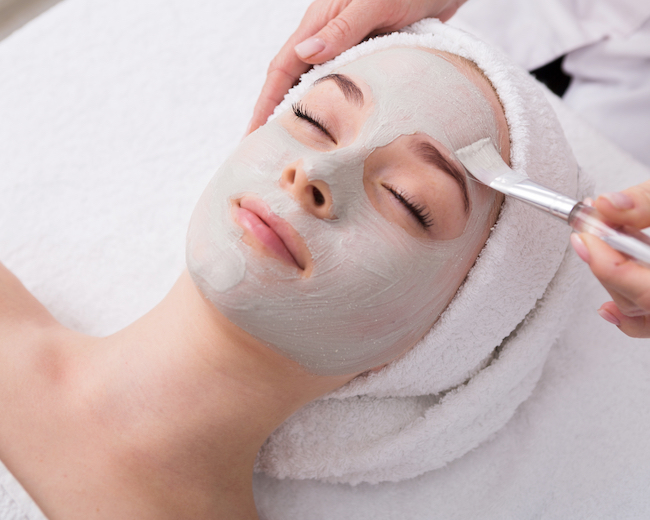How to choose the right exfoliator for your skin
From scrubs to chemical exfoliants, we break down the best products to slough your way to a smoother, softer and brighter complexion.
You’ve been told to exfoliate your face at least twice a week and now are confronted with a dizzying array of products every time you walk into the store. We chat to dermatologist Dr Dilshaad Asmal to help you choose the right exfoliator for your skin.
Let’s get physical
That granular scrub or actual tool - like a facial sponge or brush - that promises baby-soft skin is part of “team mechanical exfoliation” and is “a physical process,” says dermatologist, Dr Dilshaad Asmal. In other words, you’re performing manual exfoliation to remove dead skin cells from the skin surface, she says. “Basically, you use a slightly rough instrument or scrub to slough off the top layer of the skin. These products speed up the natural exfoliation process to keep the skin smooth and healthy,” Dr Asmal explains. “The benefit of exfoliating skin this way is immediate results and no effect on your daily skin routine,” she adds.
A chemistry lesson
Then, on the other hand, we have chemical exfoliants. These work as they are made from “solutions that are slightly more acidic than the skin,” says Dr Asmal. “This allows the dead skin cells to be sloughed off from the living ones.”
“If you have sensitive skin, this might be the better option for you as chemical exfoliators don’t create a mechanical force on the skin, and are generally gentler,” reports Dr Asmal.
“In addition, this type of product not only works on the top layer of skin, but can penetrate and work on deeper layers – perfect if you’re also after any anti-ageing benefits,” she adds. More good news is that this process “creates a long-term increase in your skin’s exfoliation rate and will give you better cosmetic results,” says Dr Asmal.
Let’s look at the different type of chemical exfoliants in more detail
There are two main types of exfoliating acids: Alpha hydroxy acids (AHAs) and neta hydroxy acids (BHAs). “Oily and mild acne prone skin will benefit from a BHA like salicylic acid as it cuts through sebum and oil,” says Dr Asmal. “It can help reduce the small bumps on the skin and be a helpful cosmetic procedure if you don’t have actively inflamed acne,” she adds.
AHAs include glycolic and lactic acids, are water soluble and have good anti-aging agents. “They’re able to moisturise dry or combination skin as they have water binding properties,” explains Dr Asmal.
The rules of exfoliation
Whether you decide to manually polish your skin or utilize the power of an AHA or BHA to tackle blemishes, do so with caution. “It’s important to use sunblock after you have had a chemical peel and to adopt the procedure of being sun savvy for the future,” says Dr Asmal. And never over exfoliate; it just annoys your skin. “Doing this can cause a chronic skin irritation – you only need to exfoliate oily, normal and combination skin two to three times a week and once a week if you have sensitive skin,” she says.
IMAGE CREDIT: shutterstock.com
Products featured in this article
-
Super Soft Cleansing Brush
R 315.00 -
Mineral SPF50 Sunscreen Fluid For Face 30ml
R 445.00 -
Sensitive SPF50 Face & Neck Cream 50ml
R 129.00 -
Gentle Exfoliating Gel 50ml
R 309.00 -
Seaweed Pore-Cleansing Facial Exfoliator 100ml
R 220.00 -
Salon Skin Daily Skin Polish Powder 75g
R 199.00



